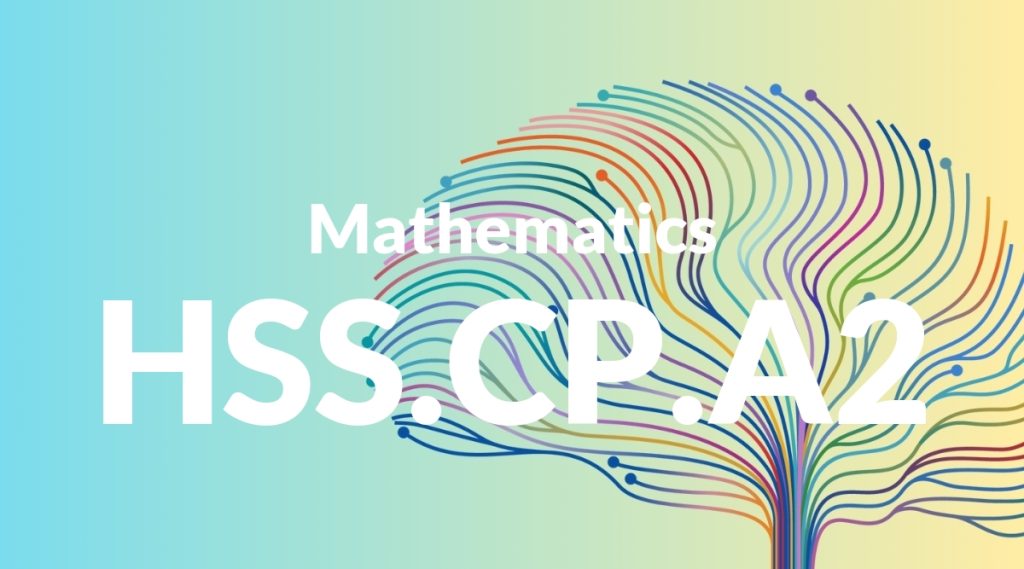Standard: HSS.CP.A2 – Understand that two events A and B are independent if the probability of A and B occurring together is the product of their probabilities, and use this characterization to determine if they are independent.
Grade level: High School: Statistics & Probability
Subject: Mathematics
Domain: Conditional Probability & the Rules of Probability
Teacher Overview
This standard focuses on understanding and identifying independent events in probability. It’s crucial because it lays the foundation for more advanced probability concepts and real-world applications, such as risk assessment and statistical analysis. Students should already understand basic probability, including calculating the probability of single events and joint events. They should also be comfortable with multiplication and basic algebra.
Mastering this standard prepares students to tackle more complex probability topics, such as conditional probability and Bayes’ Theorem, and to apply these concepts to real-world scenarios.
Common Misconception 1
A common misconception is that if two events occur together frequently, they must be dependent. This is incorrect because independent events can occur together by chance, and their joint probability is the product of their individual probabilities.
Intervention 1
To address this misconception, use visual aids like Venn diagrams and probability trees to illustrate how independent events can occur together by chance. Provide multiple examples and practice problems.
Common Misconception 2
Another misconception is that independent events cannot occur together. This is incorrect because independent events can and do occur together; their occurrence does not affect each other’s probability.
Intervention 2
To remediate this, provide counterexamples and practice problems where independent events occur together. Reinforce the concept through repetition and varied examples.
Prerequisite Knowledge
Students should have a foundational understanding of basic probability concepts, including calculating the probability of single events and understanding the concept of events occurring together (joint probability). Familiarity with multiplication and basic algebra is also necessary.
Subsequent Knowledge
After mastering this standard, students will be able to apply their understanding of independent events to more complex probability scenarios, including conditional probability and Bayes’ Theorem. They will also be prepared to analyze real-world situations involving multiple probabilistic events.
Instructional Activities
- Create a Venn diagram to visualize independent events.
- Use probability trees to calculate joint probabilities of independent events.
- Analyze real-world scenarios, such as weather predictions, to identify independent events.
- Conduct experiments, like flipping coins, to observe independent events in action.
- Solve practice problems involving independent events and their probabilities.




